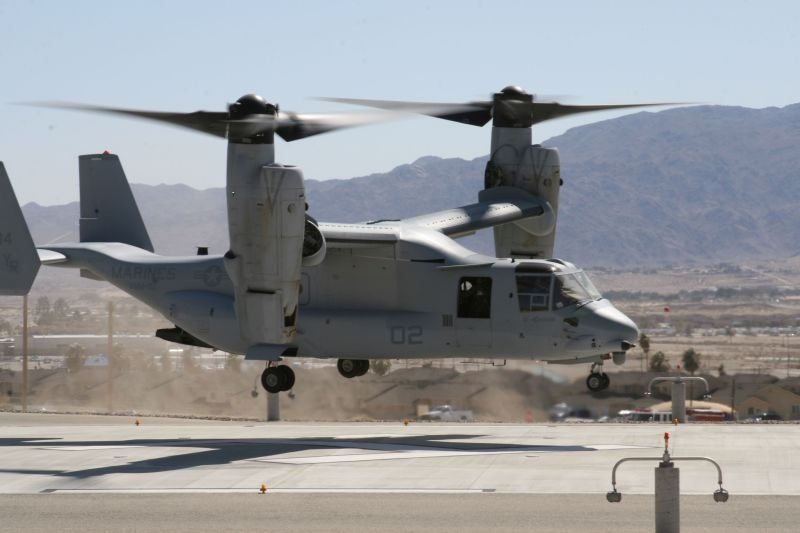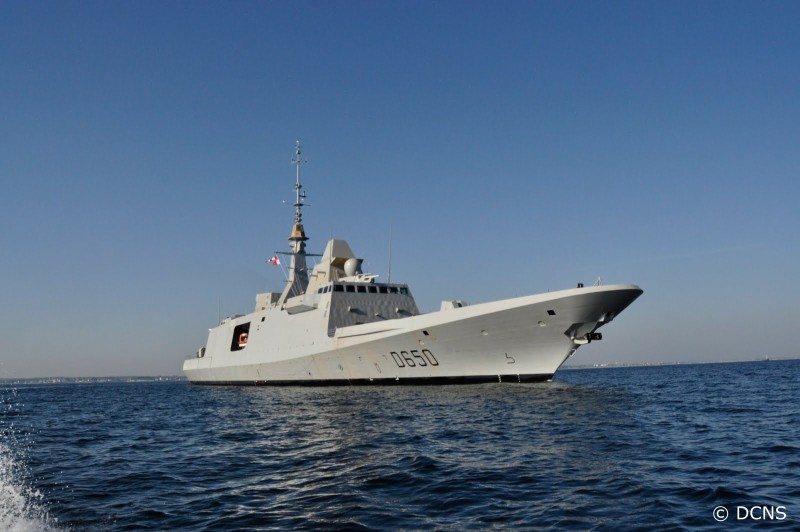The Department of Defense, in close coordination with the Government of Japan, is moving forward with the introduction of the MV-22 aircraft to III Marine Expeditionary Force in Japan.
The DoD provided host nation notification to the Government of Japan in Tokyo June 29 that it will make a fleet upgrade to replace CH-46 helicopters with MV-22 Osprey aircraft. The aircraft will arrive at Marine Corps Air Station Iwakuni for unloading in late July.
At the request of the Government of Japan, the DoD has provided facts and preliminary findings from ongoing investigations of recent mishaps involving an MV-22 and CV-22 aircraft.
In the case of the April 11, 2012 MV-22 mishap in Morocco, flight data information indicates that the aircraft performed as expected and described in the MV-22 Naval Air Training and Operating Procedures Standardization (NATOPS) FlightManual. The U.S. Marine Corps has determined the aircraft did not suffer from a mechanical or material failure and there were no problems with the safety of the aircraft.
In the case of the June 13, 2012 CV-22 mishap in Florida, a preliminary review of the incident has not uncovered any information which would preclude the continued operation of the aircraft. The Department of Defense, including senior U.S. Air Force leaders, stands behind the CV-22’s reliability and is convinced that the aircraft is safe for operations.
Based on these preliminary conclusions, and in close coordination with the Government of Japan, the DoD decided to proceed with the shipment of MV-22 aircraft.
In recognition of the remaining concerns of the Japanese government about the safety of the aircraft, the DoD will refrain from any flight operations of the MV-22 in Japan until the results of the investigations are presented to the Japanese government and the safety of flight operations is confirmed. The Defense Department anticipates presenting this information to the Japanese government in August.
During this period, Japan will be the only location worldwide where the United States will suspend MV-22 flight operations. The United States will continue uninterrupted flight operations of the MV-22 and CV-22 elsewhere around the world, including over the continental United States.
The MV-22 Osprey has an excellent safety record, and has surpassed 115,000 flight hours. About one third of the total hours were flown during the last two years. The Osprey achieved these flight hours performing combat operations, humanitarian assistance, training, and test and evaluation missions. Basing the Osprey in Okinawa will significantly strengthen the United States’ ability to provide for the defense of Japan, perform humanitarian assistance and disaster relief operations and fulfill other alliance roles. (ends)
DOD, Japan Move Forward on Osprey Fleet Upgrade
(Source: US Department of Defense; issued June 29, 2012)
WASHINGTON — Working closely with the Japanese government, the Defense Department will replace CH-46 helicopters used by the 3rd Marine Expeditionary Force in Okinawa with MV-22 Osprey tilt-rotor aircraft for operations beginning in August.
At a Pentagon news conference today, Defense Secretary Leon E. Panetta said U.S. officials have had “very good discussions with our Japanese allies” and have given them assurances regarding concerns about the aircraft’s safety record.
“But the important thing, we felt, was to be able to deploy these planes there, and that we will continue to brief them with regards to the operations of these planes,” the secretary said.
“Actually, we think we’ve reached a very good compromise here. … I think we’ve been able to relieve their concerns with what we’ve presented to them,” Panetta continued. “But we’re going to continue to work with them. The good thing is that our ability to deploy these forces will certainly help us with regards to our whole rebalancing to the Asia-Pacific region.”
Recent accidents involving an MV-22 and a CV-22 aircraft raised concerns about the fleet upgrade by the governor of Okinawa, Pentagon Press Secretary George Little said June 20. Senior Defense Department officials briefed a Japanese delegation on the incidents at the Pentagon June 22.
On April 11 in Morocco, an MV-22 crashed while taking part in a bilateral military exercise. There were no casualties. Flight data indicates the aircraft performed as expected. In a statement, DOD officials said the U.S. Marine Corps determined the aircraft did not suffer a mechanical or material failure and there were no problems with the aircraft’s safety.
Earlier this month, a CV-22 crashed during a training mission in Navarre, Fla., leaving five crew members injured. A preliminary review uncovered no information that would preclude the aircraft’s continued operation, Pentagon officials said.
The Defense Department, including senior U.S. Air Force leaders, stands behind the CV-22’s reliability and is convinced the aircraft is safe for operation, officials said in a statement.
The MV-22 Osprey operates with the speed and range of a turboprop, the maneuverability of a helicopter and the ability to carry 24 Marine combat troops. It travels twice as fast and five times farther than previous helicopters.
The Air Force CV-22 Osprey is a special operations variant of the aircraft. It can fly like an airplane and land like a helicopter.
In response to remaining safety concerns, officials said, the MV-22 will not fly in Japan until results of the investigations are presented to the Japanese government in August. During this time, Japan will be the only location worldwide, including the continental United States, where MV-22 flight operations will be suspended, they added.
The MV-22 Osprey has an excellent safety record and has logged more than 115,000 flight hours, the Defense Department statement said. About a third of those flight hours were flown during the last two years, the statement continued, and the Osprey achieved these flight hours performing combat operations, humanitarian assistance, training, and test and evaluation missions.
Basing the Osprey in Okinawa will strengthen the U.S. ability to provide for the defense of Japan, perform humanitarian assistance and disaster relief operations, and fulfill other alliance roles, the Pentagon statement said.











